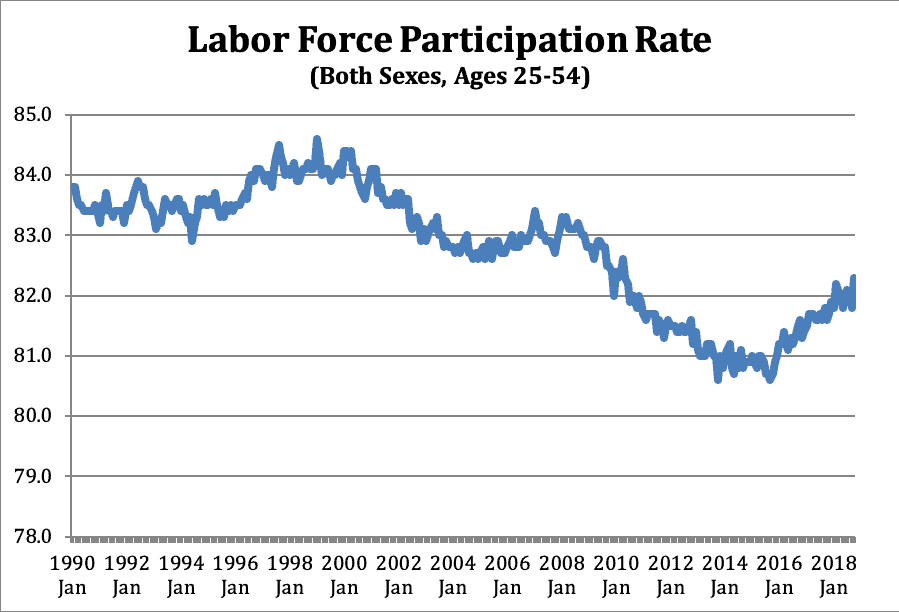The Daily Dish
November 5, 2018
The Indefinite Expansion?
Eakinomics: The Indefinite Expansion?
Greg Ip has an interesting Wall Street Journal column that features this: “Friday’s jobs report showed unemployment remains at a 49-year low, and it should be even lower next July when, as is likely, the expansion becomes the longest on record. How much longer does Federal Reserve Chairman Jerome Powell think this performance can continue? ‘Effectively indefinitely,’ he told an interviewer last month.”
Chairman Powell’s focus is on inflation and the capacity of the economy to expand in a non-inflationary fashion. As Eakinomics has emphasized, the degree to which this can be successful indefinitely hinges crucially on the future path of productivity growth.
A second, distinct question is just how long the monthly employment reports can continue to report over 200,000 new jobs. At the moment, the prime-age population – both sexes, aged 25 to 54 – is growing at about 0.5 percent annually. This translates into roughly 57,000 new prime-age individuals a month. The October jobs report (released this past Friday) featured a jump in the labor force participation rate for this population from 81.8 percent to 82.3 percent. Good news, but even if 82.3 percent of the prime-age population enters the labor force, that is only 47,000 new workers. That’s a far cry from 200,000 jobs or more monthly.
As has been widely noted, however, prime-age labor force participation is below historic norms (see below).
In part, this may reflect the ravages of the opioid epidemic. AAF’s Ben Gitis estimates that roughly two million prime-age workers are “missing” due to opioid addiction. But there also is the prospect that a rapidly growing economy could continue to move individuals from the ranks of non-work into the labor market. How big could that be?
The recent high for the labor force participation rate was hit in January 1999, when it reached 84.6 percent. The difference between participation of 84.6 percent and 82.3 percent is another 2.9 million Americans in the labor market. If that transpired over the next 12 months, it would boost jobs by over 240,000 a month. Obviously, if it took longer to transpire the monthly number would come in below that.
Perhaps we cannot have an indefinite expansion with high job growth and low inflation. But with increases in labor force participation and growth in productivity, we can have both for more years to come.
Fact of the Day
Twenty-three more insurers are participating in the Affordable Care Act's exchanges in 2019 than this year, and 29 current insurers are expanding their offerings — the first increase of this kind since 2015.











